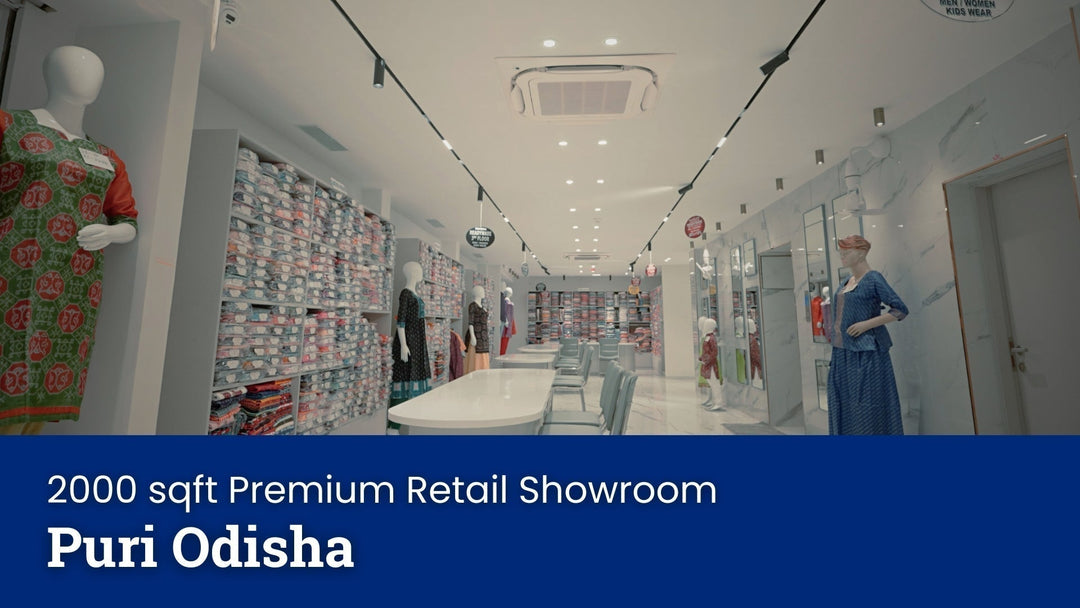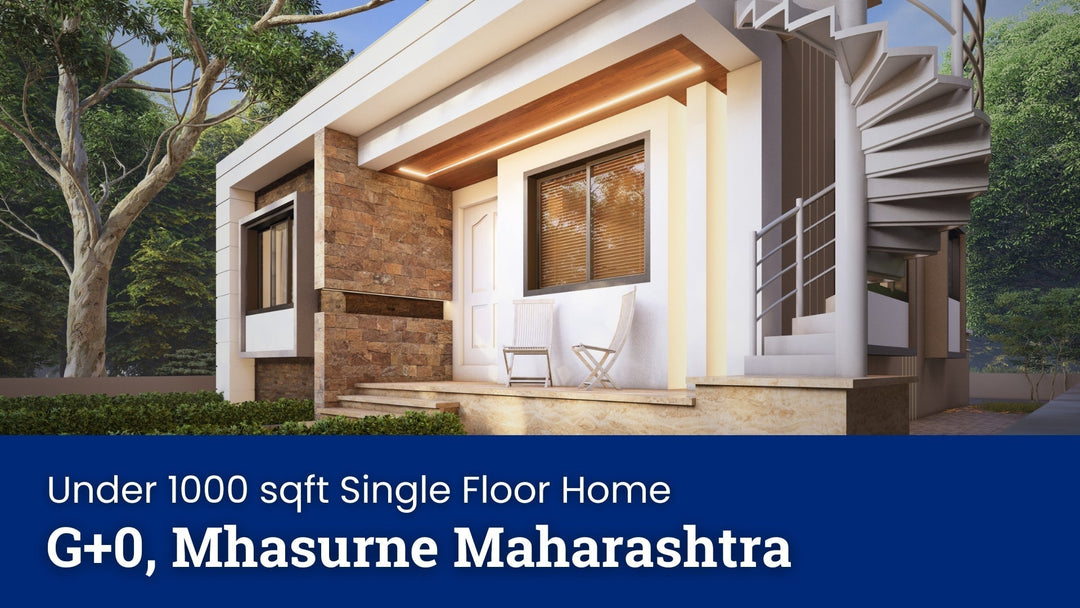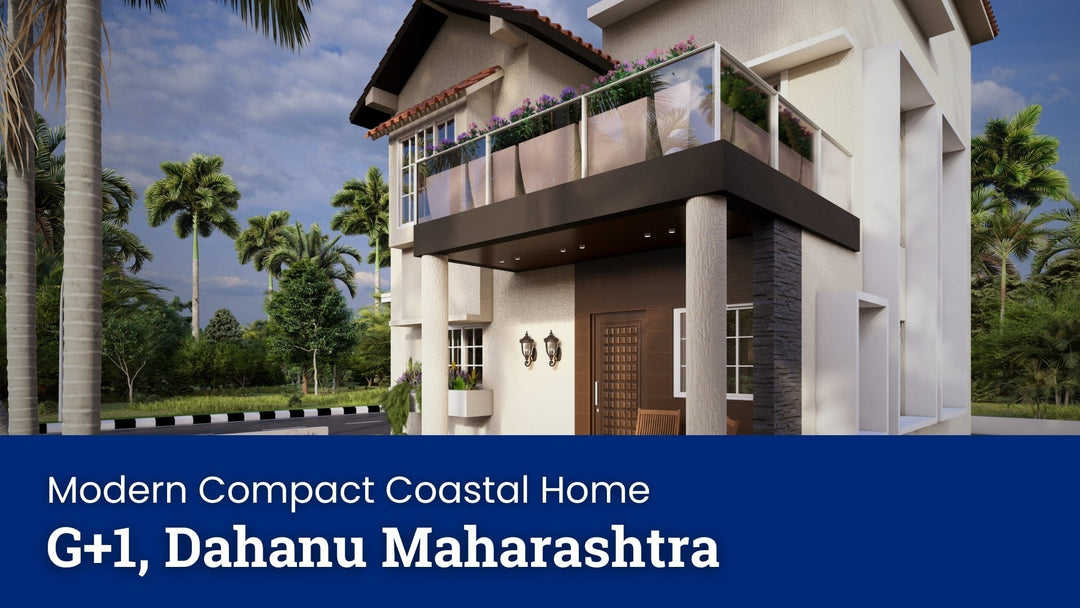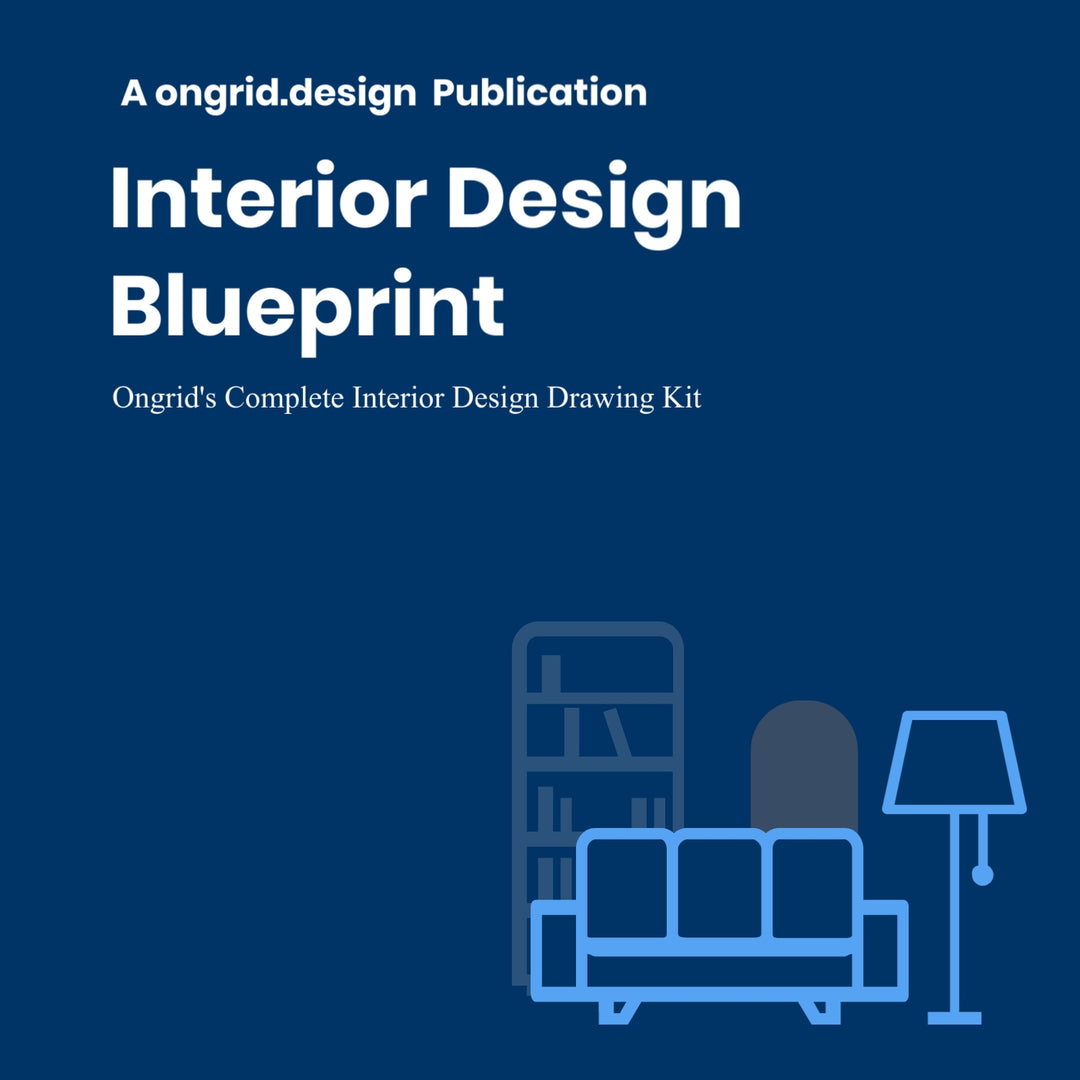Compact – Maximizing Style, Function, and Comfort in a 986 sq. ft. Single-Story Home
 In the evolving landscape of modern Indian housing, a new paradigm is emerging—one that champions quality of life not through sheer size, but through intelligent, efficient design. Project 1129 stands as a testament to this philosophy. This 986 sq. ft. single-story residence in Maharashtra exemplifies the art of compact design, demonstrating with clarity and elegance how thoughtful architectural planning can create a fully functional, climate-responsive, and aesthetically compelling family home within a modest footprint.
In the evolving landscape of modern Indian housing, a new paradigm is emerging—one that champions quality of life not through sheer size, but through intelligent, efficient design. Project 1129 stands as a testament to this philosophy. This 986 sq. ft. single-story residence in Maharashtra exemplifies the art of compact design, demonstrating with clarity and elegance how thoughtful architectural planning can create a fully functional, climate-responsive, and aesthetically compelling family home within a modest footprint.
Project Specifications
| Specification | Details |
|---|---|
| Location | Maharashtra, India |
| Built-Up Area | 986 sq. ft. (91.6 sq. m.) |
| Plot Area | Approx. 3,100 sq. ft. |
| Project Type | Single-story contemporary residence |
| Bedrooms | 2 (both with attached bathrooms) |
| Key Features | Open-plan living-dining-kitchen, dedicated storage room, covered porch, external staircase to terrace, integrated shading, climate-responsive design |
| Structural System | RCC frame with optimized member sizes and non-load-bearing infill walls |
| Foundation | Isolated footing system with plinth tie beams |
| Primary Materials | AAC blocks, Vitrified tiles, Aluminium/UPVC windows, Painted exterior finishes |
This comprehensive case study explores the journey behind this remarkable project, revealing how Ongrid's collaborative, data-driven design process transformed the inherent constraints of a compact site into opportunities for innovation. It is a story of maximizing every square foot, harmonizing with the demanding local climate, and delivering a blueprint that empowers a young, forward-thinking family to build their dream home without compromise.
The Vision and The Challenge: A New Aspiration for Urban Maharashtra 
The Client's Dream: A Modern, Efficient, and Attainable Home
The project was initiated by a young, professional family in Maharashtra who represented a growing and discerning demographic in urban India. Their vision was clear and pragmatic: to create a modern, efficient, and cost-effective home that could comfortably accommodate their lifestyle without the excess and expense of a large, sprawling house. They sought a design that prioritized quality over quantity, a home that was easy to maintain, thermally comfortable, and intelligently planned to support the patterns of their daily lives. This was not a desire for a smaller home, but for a smarter one.
The Core Challenge: Intelligent Density on a Compact Footprint 
The primary challenge was one of intelligent density: how to maximize livability, functionality, and perceptual spaciousness within a tightly defined built-up area of just 986 square feet. This required a design strategy that went far beyond conventional room arrangements. Every square foot had to be justified, every design move had to serve multiple purposes, and every solution had to be both elegant and efficient.
Compounding this spatial challenge was the demanding climate of Maharashtra. Characterized by a hot and often humid tropical climate with an intense monsoon season, the home had to be designed as a high-performing environmental filter. The architecture needed to breathe, to protect, and to remain comfortable year-round without a heavy reliance on mechanical cooling systems, employing natural ventilation strategies that are essential for this region.

The specific hurdles were clear:
Spatial Efficiency: Accommodating two private bedrooms with ensuite bathrooms, an open and sociable living-dining-kitchen area, dedicated storage solutions, and functional outdoor spaces within the compact footprint.
Thermal Comfort: Integrating passive climate-responsive strategies to mitigate solar heat gain, promote natural cross-ventilation, and ensure the home remained cool and comfortable.
Perceptual Spaciousness: Employing design techniques to make the compact interiors feel open, airy, and larger than their actual dimensions, utilizing principles detailed in home design plans for small spaces.
Buildability & Cost-Effectiveness: Delivering a design that was not only beautiful and functional but also structurally efficient and buildable within the client's budget constraints.
Ongrid's mission was to prove that compact living doesn't mean compromised living. The goal was to deliver a blueprint that celebrated efficiency, delivering maximum functionality, aesthetic appeal, and climate resilience within a meticulously managed footprint.
The Ongrid Approach: A Collaborative Journey to a Tailored Blueprint 
A Digital-First, Dialogue-Driven Process
The design journey began with Ongrid's signature online, collaborative methodology. Through a series of extensive virtual consultations, 3D model sharing sessions, and real-time feedback workshops, we delved deep into the family's daily patterns, spatial priorities, and lifestyle aspirations. This transparent, digital-first process was crucial in building trust and ensuring the clients were active participants in the design of their future home. Key requirements that emerged from this dialogue included:
- The need for highly efficient, integrated storage solutions to maintain a clutter-free environment
- A strong desire for seamless indoor-outdoor connections to extend the living space visually and functionally
- A focus on natural lighting strategies to make the home feel bright and welcoming
- The creation of flexible, multi-functional spaces that could adapt to different activities throughout the day, following principles of creating balance and flow in furniture layout
A Philosophy of "Intelligent Density" 
Our design strategy was centered on the principle of "intelligent density"—the art of maximizing functionality without creating a feeling of being cramped. This philosophy was executed through several key approaches:
Prioritizing Open-Plan Concepts: Breaking down the barriers between primary living spaces to create visual and spatial continuity.
Eliminating Waste: Scrutinizing the floor plan to remove unnecessary circulation space, such as long, inefficient corridors.
Integrating Multi-Functional Elements: Designing spaces and furniture that could serve multiple purposes.
Layering Spaces: Creating visual connections between different areas to enhance the perception of depth and space.
Key Design Solutions: Where Strategy Meets Livability

The Open-Plan Core: A Masterclass in Spatial Efficiency
The heart of this 986 sq. ft. home is a masterfully orchestrated open-plan living area. This unified space, occupying approximately 300 square feet, seamlessly integrates the living, dining, and kitchen functions. This design solution is the primary driver of the home's spacious feel, creating a sense of visual and spatial continuity that makes the compact interior feel significantly larger than its actual footprint.
Zoning within Openness: While the space is open, the layout is carefully zoned. The kitchen is strategically positioned to maintain a strong connection with the living and dining areas—perfect for a family that enjoys cooking and socializing simultaneously, incorporating ideas from compact kitchen design solutions. A discreetly located pantry area provides essential bulk storage, keeping the main kitchen clean and uncluttered.
Climate-Responsive Layout: This open layout is also a key climate-responsive strategy. It allows cooling breezes to flow freely and unimpeded through the primary living spaces, facilitating natural cross-ventilation that is essential for comfort in Maharashtra's tropical climate.
Blurring Boundaries: Large windows and full-height glass doors are used to extend sightlines to the covered porch and surrounding green spaces. This technique of "borrowing" outdoor views creates the perception of an expanded living area while flooding the interior with abundant, diffused natural light.
Efficient Private Retreats: The Bedroom Sanctuaries 
The two bedrooms are designed as compact yet highly functional and comfortable retreats. Each room, approximately 120 square feet, is a model of spatial efficiency, featuring an attached private bathroom and incorporating space-saving bedroom solutions that maximize functionality.
Integrated Storage: The key to their success lies in the integration of custom, built-in storage solutions. Floor-to-ceiling wardrobes and cleverly designed study nooks are built directly into the architectural fabric of the rooms. This approach eliminates the need for bulky, standalone furniture, freeing up valuable floor area and maximizing the usable space for circulation and relaxation.
Optimized for Comfort & Privacy: The bedrooms are positioned to optimize natural ventilation, with windows strategically placed on opposing walls to capture cross-breezes. Their location and window placements are also carefully considered to maintain visual privacy from neighboring properties, creating serene and private sanctuaries.
Compact Functionality: The attached bathrooms, though compact, are designed with meticulous attention to detail. They incorporate modern, space-saving fixtures and highly efficient layouts that provide all necessary amenities—a shower, WC, and washbasin with storage—within a minimal footprint.

The High-Performance Envelope: Climate-Responsive Exterior Design
The exterior of the home is a sophisticated and dynamic response to the climatic challenges of Maharashtra, reflecting unique elements that define Maharashtra's home design. It is designed as a high-performance envelope that actively works to keep the interiors cool and comfortable.
Strategic Shading: The design features deep roof overhangs, cantilevered projections, and carefully placed vertical fins. These architectural elements are not merely stylistic; they are precisely calculated shading devices that provide essential solar protection. They are designed to block the high-angle sun during the hottest parts of the day, which can reduce interior heat gain by up to 35% compared to an unprotected façade.
Optimized Orientation: The building's orientation and the placement of its windows are a direct response to the sun's path. Glazing is maximized on the north facade to capture glare-free ambient light, while windows on the east, west, and south are smaller and protected by deep shading to minimize direct solar heat gain during peak summer periods.
Transitional Outdoor Spaces: The covered porch and terrace areas are crucial design elements. They create essential transitional zones that offer sheltered outdoor living opportunities while simultaneously acting as thermal buffers, protecting the main interior spaces from direct sun and rain. An elegant external staircase provides access to the upper terrace, maximizing the use of the plot by creating a valuable outdoor area for relaxation, gardening, or social gatherings without consuming ground-level space.
Integrated Storage and Utility Solutions 
Despite its compact footprint, the design incorporates comprehensive and intelligent storage solutions throughout.
Centralized Storage: A dedicated storage room is a key feature, providing a centralized location for bulky household items, seasonal belongings, and utilities. This simple but effective solution is crucial for eliminating clutter from the main living areas and maintaining a sense of order.
Seamless Integration: Built-in storage elements are seamlessly integrated into walls, under the external staircase, and within custom furniture pieces to maximize storage capacity without encroaching on precious floor area.
Kitchen Efficiency: The kitchen design features a highly efficient layout of upper and lower cabinets, a separate pantry area, and integrated appliance spaces. This meticulous planning maintains the clean, uncluttered aesthetic that is essential for successful small-space living.
Technical Excellence: The Unseen Intelligence of Compact Design 
Structural Efficiency and Openness
The structural design demonstrates optimized engineering solutions perfectly suited to the compact scale of the project. A reinforced concrete (RCC) frame system utilizes efficiently sized columns and beams that provide all necessary strength and stability while minimizing material usage and construction costs. The foundation system, consisting of cost-effective isolated footings with connecting tie beams, is designed to provide stable support based on the local soil conditions.
Crucially, the structural layout is engineered to eliminate the need for internal load-bearing walls. This is what makes the open-plan living concept possible, maximizing the feeling of spaciousness within the 986 sq. ft. footprint while maintaining complete structural integrity. Column placement is strategically coordinated with architectural elements, often integrated into walls or cabinetry to be as unobtrusive as possible, ensuring a smooth spatial flow.
Smart Integration of Building Services
The electrical and plumbing systems are designed for maximum efficiency within the compact layout. Service routing is carefully planned and optimized to minimize the length of pipe and wire runs, which reduces costs and ensures easy access for future maintenance.
Electrical Design: The layout incorporates energy-efficient LED lighting and provides an adequate number of power points to support a modern family's lifestyle, all planned around the furniture layout to be convenient and unobtrusive.
Plumbing Design: The design utilizes a back-to-back bathroom arrangement, a highly efficient strategy that consolidates plumbing lines, minimizes complex pipe runs, reduces construction costs, and simplifies maintenance. Water heating and storage solutions are integrated efficiently to serve the home's needs without consuming excessive space.
Outcomes and Impact: A New Paradigm for Compact Living
Functional Success and Cost Effectiveness
The completed 986 sq. ft. design is a powerful demonstration that compact homes can deliver exceptional functionality without sacrificing comfort or aesthetic appeal. The space planning achieves remarkable efficiency, comfortably accommodating all the essential functions of a modern family within a footprint that represents excellent value for every square foot of construction investment. The open-plan concept is highly successful in creating a perception of spaciousness, while the integrated storage solutions ensure a clutter-free and highly livable environment. The project exemplifies cost-effective design strategies, proving that a fully functional and beautifully designed family home is attainable within a modest budget.
Superior Climate Performance
The climate-responsive design features ensure year-round thermal comfort with minimal dependence on mechanical cooling systems. The strategic orientation, natural ventilation strategies, effective shading, and thermal mass optimization create comfortable interior conditions that align with sustainable living principles. The design is a clear proof-of-concept that environmental responsibility and user comfort can be achieved simultaneously, even in compact residential projects in a challenging climate.
A Model for a Growing Need
Project 1129 stands as an exemplary model for how thoughtful, intelligent design can transform the constraints of a compact footprint into an opportunity for innovation. It proves that small-home living doesn't require compromise. Through meticulous planning, strategic design decisions, and a deep understanding of the user's needs, compact homes can deliver an exceptional quality of life.
This project serves as a valuable and inspiring case study for the growing demand for efficient, affordable, and high-quality housing solutions in urban and semi-urban Maharashtra. By engaging with Ongrid's expert team through our collaborative, digital-first design process, the clients were transformed into empowered Project Owners. They were equipped not just with a design, but with comprehensive construction documentation and the deep confidence needed to execute their vision with their chosen contractor.
This Maharashtra residence demonstrates that contemporary Indian families can achieve their dream of homeownership within compact, efficient, and beautiful designs that honor both their lifestyle aspirations and environmental responsibility. It establishes a new and inspiring paradigm for small-home design—one that prioritizes functionality, sustainability, and aesthetic excellence within carefully managed footprints.










